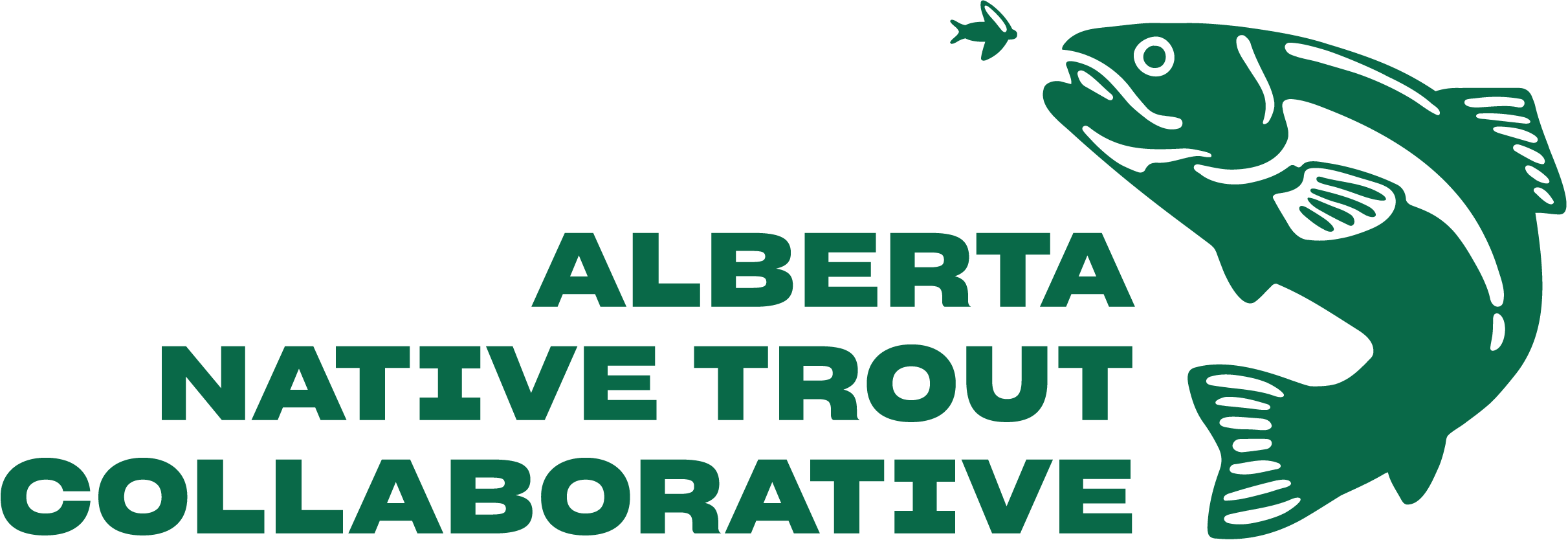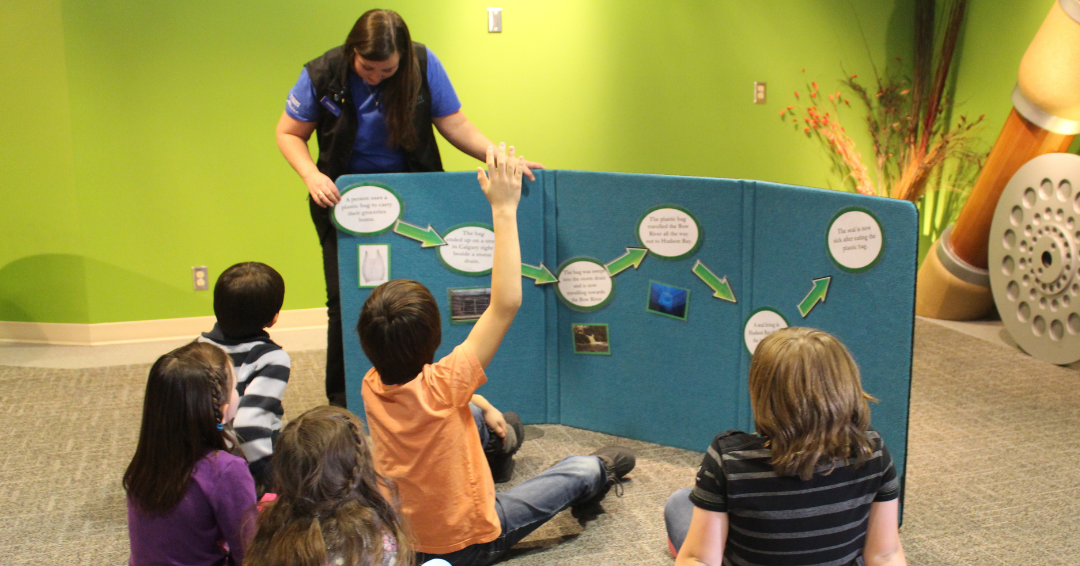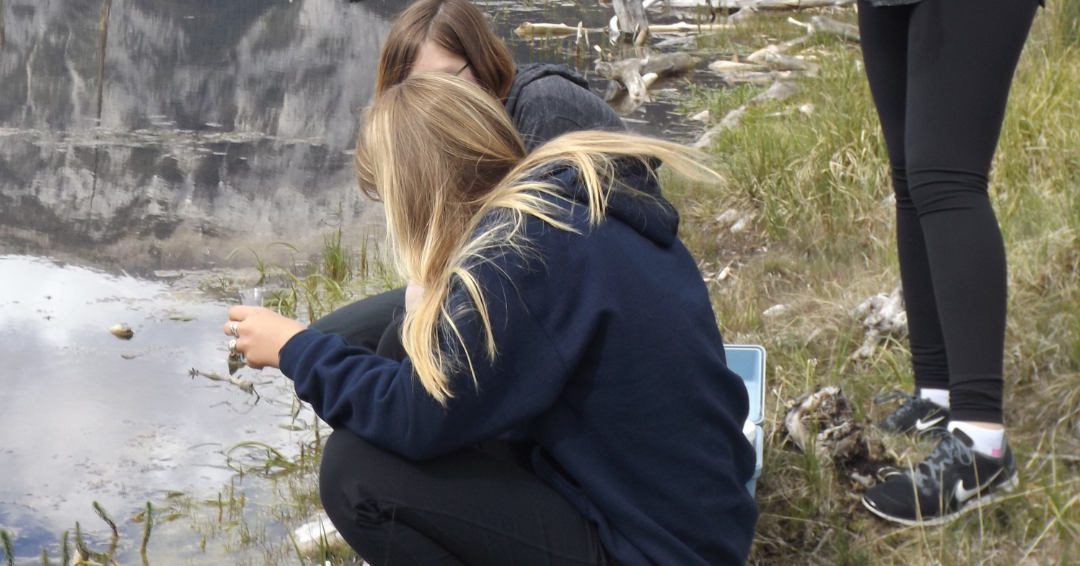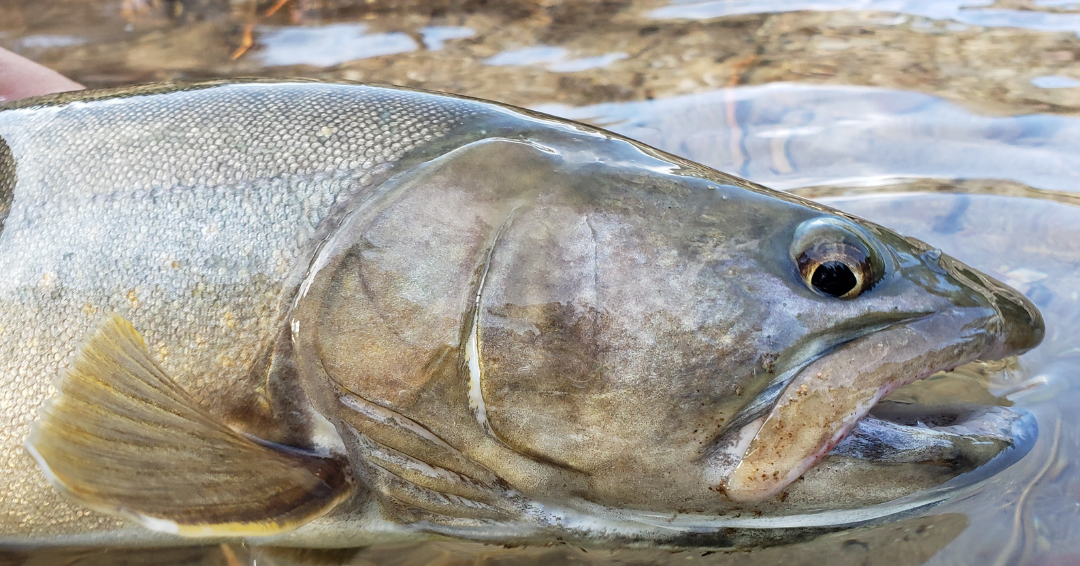Become trout habitat and watch the trout population grow and shrink.
PURPOSE
Dive into Alberta native trout habitat, learn about trout needs, and explore how humans can harm or help trout populations.
RECOMMENDED GRADES
Grades 1-4
TIME NEEDED
20-30 minutes
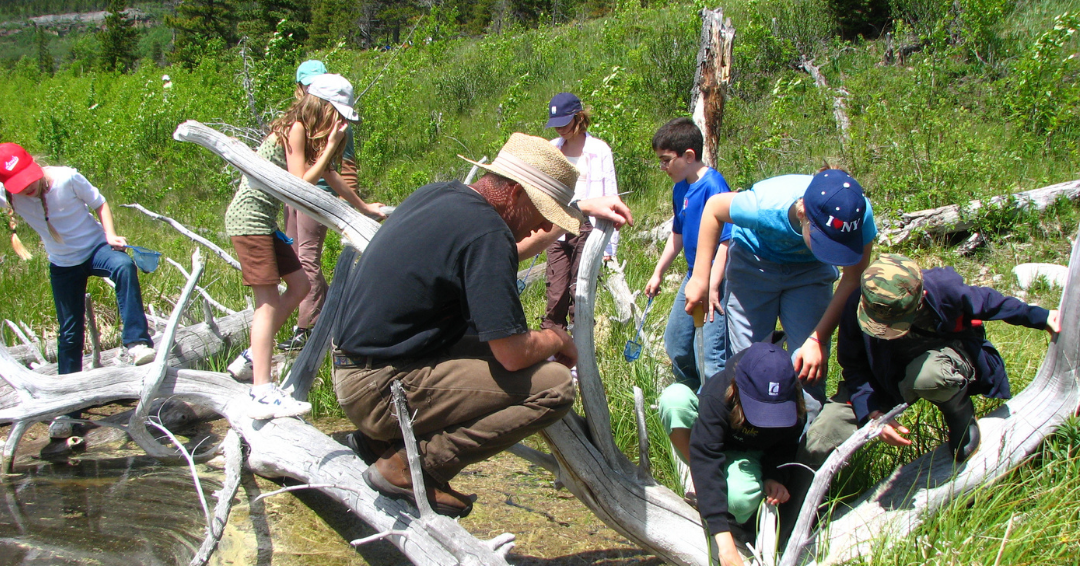
Curriculum CONNECTIONS
Matter & Energy (Grade 3)
Earth Systems (Grade 1-4)
Living Systems (Grade 1-3)
MATERIALS NEEDED
AV equipment for interactive web pages.
Instructions
- Learn together about Alberta native trout habitat through this interactive webpage: Healthy Trout Habitats (either exploring as a group or in small groups/on their own). Main takeaway: trout need cold, clean, complex, clear, and connected waterways!
- Meet Alberta’s three stream dwelling native trout species on this interactive webpage: Meet Alberta's Native Trout.
- Ask the participants to pretend they are a native trout species. What do trout and all species need to survive? Food, water, shelter, and space! Where do native trout get these needs from? They may prefer open meadow or forested streams (water, shelter, space) and (as carnivores) eat aquatic invertebrates (mainly small shrimp), leeches, snails, other fish, and fish eggs.
- Have participants count off in fours. All the number ones should form a line shoulder to shoulder. All the others should form a similar line facing the ones. The two lines should be about 2 meters apart. The number ones are trout; the number twos, threes, and fours are components of the habitat: food, water, and shelter.
- At the beginning of each round, each trout will decide whether it needs water, food, or shelter for that round:
-If they decide they need food, they should place their hands over their stomachs
-If they need water, they should place their hands over the mouths
-If they need shelter, they should place their hands together over their heads - Once the trout decide what they want, they cannot change their mind during the round. If a trout survives the round, it can change what it is looking for in the next round.
- The number twos, threes, and fours will decide which of the habitat components (food, water, or shelter) they will be during that round. They too will make a sign according to the habitat.
- Have both lines of participants turn their backs to eachother. Ask the trout to make a sign for what they need and ask the habitat participants to make a sign for what they are for that round. When the participants have made their signs, count “1-2-3, turn around”. The two lines should turn and face each other.
- Trout can then calmly walk (holding their sign, e.g. with their hands in front of their stomach) to the habitat component with the same sign, tag the participant, and take the habitat component back to where it started from, effectively increasing the number of trout: when a trout is successful and is able to meet its needs, then it can reproduce.
- A trout that doesn’t meet its needs dies; therefore, a trout that cannot tag its habitat requirement must (after expiring noisily on the ground!) join the habitat line and become part of the habitat (food, water, or shelter).
- Habitat components stand still in their line until a trout takes them. If no trout needs the habitat component, it stays as part of the habitat.
- Play several rounds.
Discussion:
- As in nature, students should notice an ebb and flow in their population of trout. Some years, many trout can meet their needs and can reproduce and grow. In some years, there isn’t enough habitat for the trout, or “stochastic events” such as flooding, heatwaves, or forest fires occur. In those years, less trout would successfully reproduce, and some trout would die if they can’t meet their needs. The population would shrink and the cycle would continue again.
- Is there anything humans might do that would cause the trout population to unnaturally decline? Examples include overfishing, water pollution, releasing invasive species, climate change, etc.
- How might students help the ecosystem to remain in balance for native trout?
Extension:
- Learn more about trout habitat (cold, clean, complex, clear, and connected waterways) here: Native Trout are an Indicator of Watershed Health.
Detailed Curriculum Connection
Pair This Activity With
See All Native Trout Activities
This activity is courtesy of the
Alberta Native Trout Collaborative
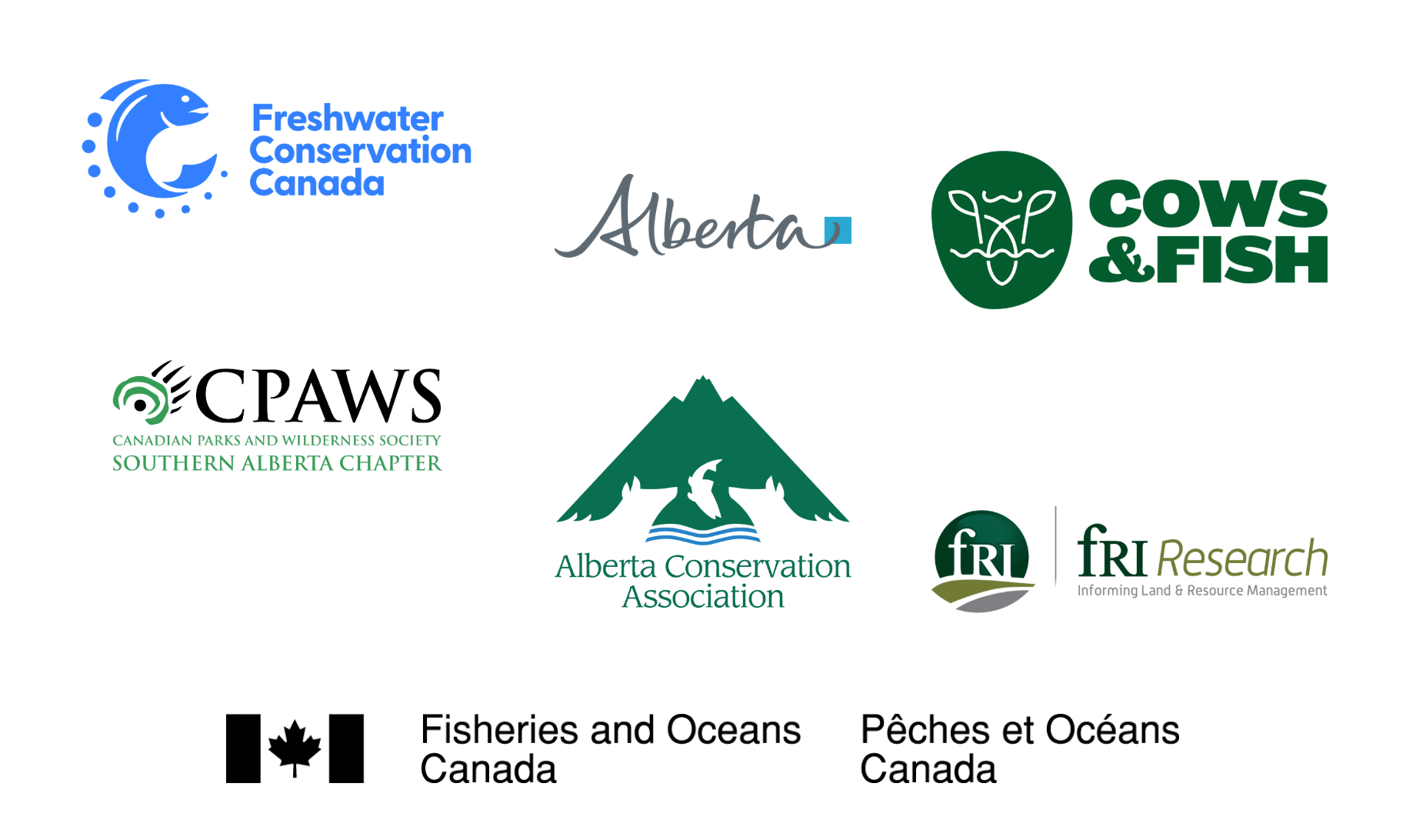
Learn more at albernativetrout.com
